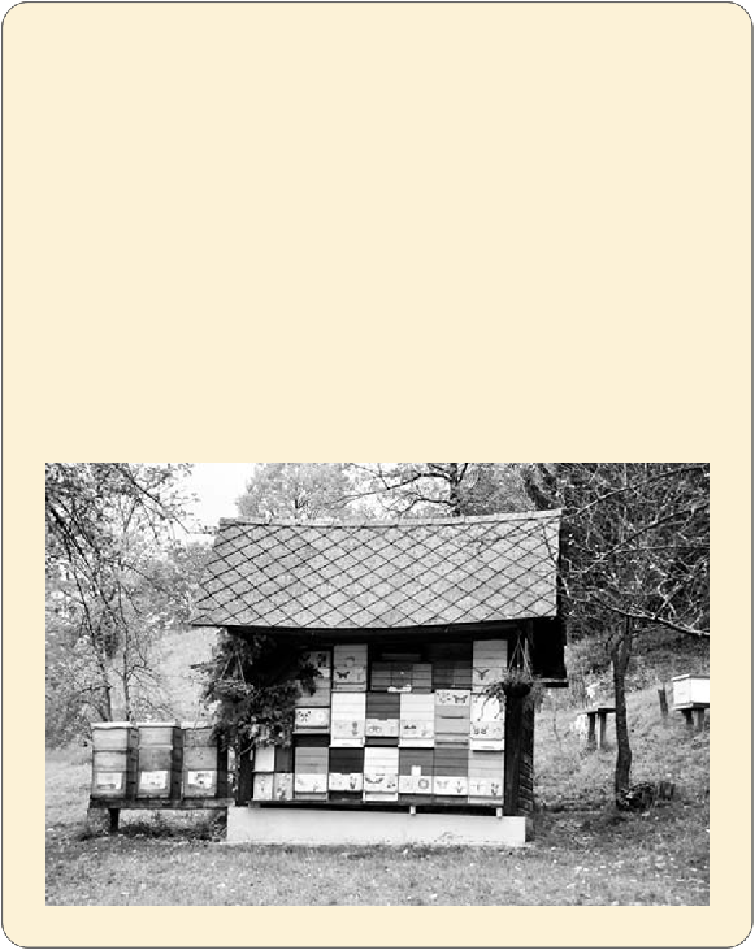Travel Reference
In-Depth Information
Since the days before Europeans had sugar, Slovenia has been a big honey pro-
ducer. Slovenian farmer Anton Janša (1734-1773) is considered the father of mod-
ern beekeeping. Habsburg Empress Maria Theresa brought him to Vienna to become
Europe's first official teacher of this art. And even today, beekeeping is considered
a crucial part of Slovenian culture. The area around Lake Bled (Carniola) has about
6,000 inhabitants, including 65 beekeepers who manage 5,000 hives—the most bees
per capita of any place in Europe.
Most Slovenian beekeepers maintain large buildings (called apiaries) that hold
banksofsmallerhives(asopposedtobeekeepersinNorthAmerica,whotendtohave
a few separate large hives). This innovation—one of many by Janša—allows bee-
keepers to maximize efficiency. Each hive has its own front panel, and each of those
is painted in bright colors, often depicting creative folk scenes. This is designed to
help both the bees and the beekeepers (who were, traditionally, often illiterate) dis-
tinguish the hives from each other. While bees may not be able to tell a painting of
a bear from one of a flower, they can distinguish enough patterns and colors to keep
themselves from accidentally going to the wrong hive—in which case they'd be at-
tacked as an outsider.

